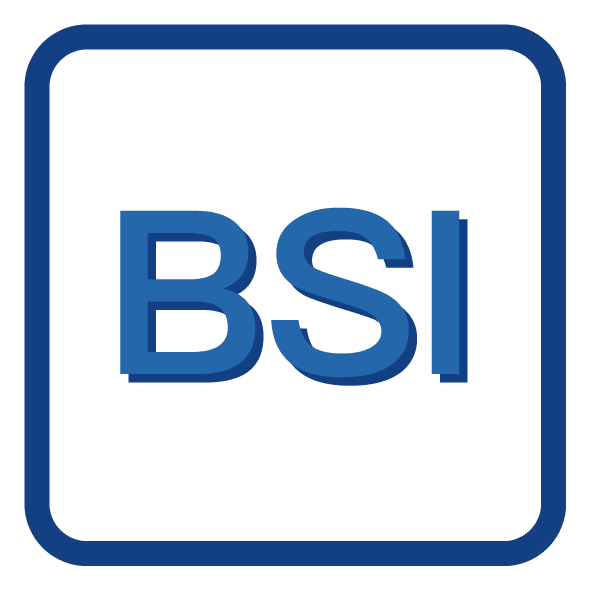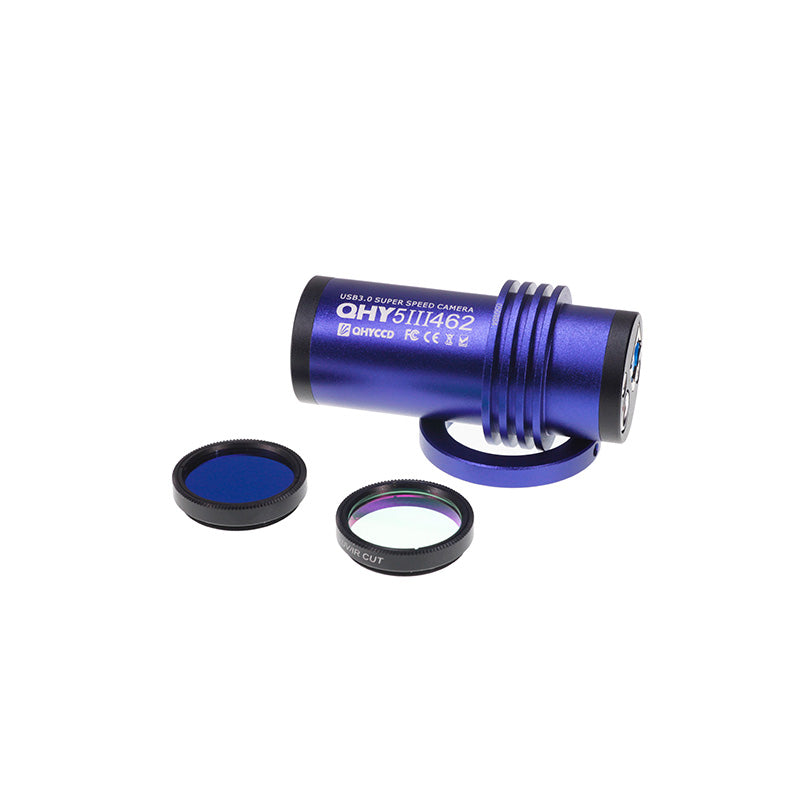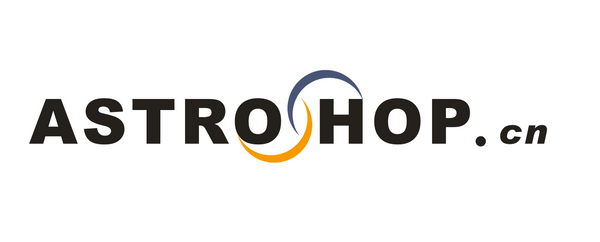QHYCCD
QHYCCD QHY5III462 M/C Astronomy Cameras
QHYCCD QHY5III462 M/C Astronomy Cameras
无法加载取货服务可用情况
| Model | Regular Retail Price* | Retail Price for the U.S. |
| QHY5III462C | $189 | $208 |
| QHY5III462M | $249 | $274 |
 One benefit of the back-illuminated CMOS structure is improved sensitivity. In a typical front-illuminated sensor, photons from the target entering the photosensitive layer of the sensor must first pass through the metal wiring that is embedded just above the photosensitive layer. The wiring structure reflects some of the photons and reduces the efficiency of the sensor.
One benefit of the back-illuminated CMOS structure is improved sensitivity. In a typical front-illuminated sensor, photons from the target entering the photosensitive layer of the sensor must first pass through the metal wiring that is embedded just above the photosensitive layer. The wiring structure reflects some of the photons and reduces the efficiency of the sensor.
In the back- illuminated sensor the light is allowed to enter the photosensitive surface from the reverse side. In this case the sensor’s embedded wiring structure is below the photosensitive layer. As a result, more incoming photons strike the photosensitive layer and more electrons are generated and captured in the pixel well. This ratio of photon to electron production is called quantum efficiency. The higher the quantum efficiency the more efficient the sensor is at converting photons to electrons and hence the more sensitive the sensor is to capturing an image of something dim.
Logically, one would think, each generation of Exmor sensor would be built upon and incorporate all of the improvements of the generation immediately preceding. However, this was not the case with the fifth generation Exmor R sensors.
The first back-illuminated sensors used shallower pixel wells (like the third-generation front- illuminated designs) than the physically deeper pixels of the fourth generation. So, while the back- illuminated structure increased the sensitivity in the visible range by 2X, the shallower pixels did not improve the NIR. The answer to this is seen in the latest, sixth generation, Sony Exmor R sensors, like the IMX462. Using physically deeper pixels in conjunction with the back-illuminated structure has dramatically improved the sensor’s sensitivity to both the visible and near infrared wavelengths.
Another advantage of the QHY5III462 is the camera’s “Super High Conversion Gain” capability. By using a lower capacitance, a small amount of charge can be converted to a high voltage resulting in higher sensitivity in low-light conditions. The readout noise of the QHY5III462 in high gain mode is as low as 0.5 electrons!
The test exposures below demonstrate the low light improvement over the IMX290 sensor. The QHY5III462C image is on the left and the corresponding QHY5III290C image is on the right. The low light conditions and exposures are identical for each top and bottom pair of images and a UV/IR filter was in place for each camera. So this test demonstrates the QHY5III462C’s increase in sensitivity and SNR over the QHY5III290C under the same conditions in the visual light spectrum alone.

The filter matrix in the IMX462 uses organic dye filters. These filters are very efficient at visible wavelengths but become completely transparent in the NIR. For this reason, good RGB color balance requires an external UV/IR filter that blocks NIR wavelengths.
Many color cameras build this UV/IR filter into the camera or optical window for normal color imaging. However, in order to fully exploit the capabilities of the 462C sensor, in the QHY5III462C camera the optical window is AR coated only with no UV or IR blocking. Instead, the QHY5III462C camera includes two 1.25″ screw-in filters, a UV/IR cut filter to isolate the visible wavelengths for normal RGB imaging and an IR850 filter that will cut the visible wavelengths but pass wavelengths above 850nm.

| Model | QHY5III462M/C |
| Image Sensor | SONY IMX462 |
| Mono/Color | Both Available |
| FSI/BSI | BSI |
| Sensor Size | Typical 1/2.8 inch |
| Pixel Size | 2.9μm*2.9μm |
| Effective Pixel Area | 1920*1080 |
| Effective Pixels | 2 Megapixels |
| Full Well Capacity | 12ke- |
| Read Noise | 0.5e- |
| A/D | 12-bit (output as 16-bit and 8-bit) |
| Built-in Image Buffer | – |
| Full Frame Rates | 135 FPS@8bit |
| ROI Frame Rates | TBA |
| Exposure Time Range | 7μs-900sec |
| Shutter Type | Electronic Rolling Shutter |
| Computer Interface | USB3.0 Type-B |
| Guide Port | Custom ST-4 |
| Telescope Interface | 1.25-inch, C-Mount |
| Optical Window | AR Anti-reflection Glass |
| Extra Filter | IR850nm Filter Included IR-Cut Filter Included in 462C Only |
| Back Focal Length | 12mm |
| Weight | 88g |
Curves





Mechanical Dimensions

Accessories
QHY5III462C STAND:

QHY5III462C BASE

QHY5III462M:

Share


